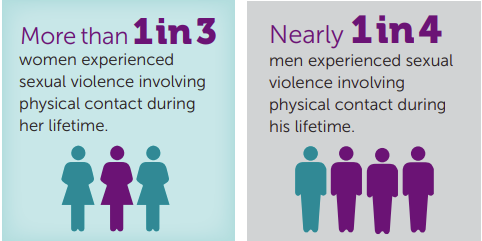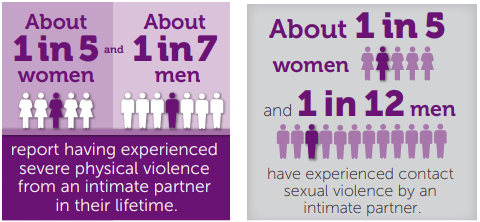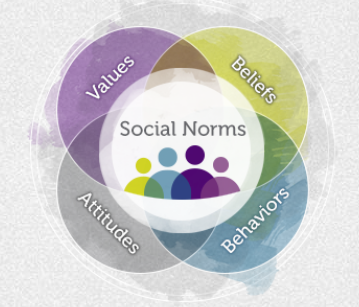Sexual and Intimate Partner Violence
| Both sexual violence and intimate partner violence are significant public health issues that have many individual and societal costs. These types of violence impact every community and people of all genders, sexual orientations, and ages. It can have profound impacts on lifelong health, opportunity, and well-being. Sexual and intimate partner violence can be prevented. | |
 |
 |
| Sexual violence is any type of unwanted sexual act. Forms of sexual violence include: | Intimate partner violence is physical, sexual, or psychological harm by a current or former spouse or dating partner. Intimate partner violence can include the following: |
|
|
For more information on intimate partner and sexual violence in North Dakota, visit the Council on Abused Women’s Services (CAWS).
What are the Social Norms that Contribute to Violence Against Women?
Social norms refer to values, beliefs, attitudes, and/or behaviors shared by a group of people. They are often based on what people believe to be normal, typical, or appropriate. The way we react to violence may be based on what we see other people do, or how we think other people would act. In other words, our reactions are based on what we believe is normal or appropriate.
 |
VetoViolence has a social norms resource that shows how attitudes, beliefs, and behaviors based in misperception can create risk for violence. It explains how social norms approaches can be used to prevent violence. |
Research has identified five social norms that contribute to sexual violence and intimate partner violence.
Tolerance of aggression and violence: Violence is everywhere and central in entertainment and marketing. It is portrayed as humorous, funny, glamorous, and thrilling; It is seen as a mechanism for addressing conflict and norms that promote tolerance of aggression excuse people who act violently.
Norms that support abuse of power: Our society places a lot of value on claiming and maintaining power, which too often gets expressed as power over other people. Harmful norms about power promote exploitation by people with more power. Power over is at the core of racism, heterosexism, sexism, classism, etc.
Harmful norms about masculinity: Rigid gender norms about masculinity that promote domination, control, and risk-taking are expressed in workplaces and other settings as an expectation that men and others will push rather than respect boundaries. This includes the expectation that men and boys are not allowed to be emotive and that stereotypical female characteristic are not acceptable for me.
Harmful norms about femininity: Rigid gender norms about femininity that promote compliance and sacrifice show up in the workplace as an expectation that women and others will accept and even blame themselves for boundary violations. This can include expectations to do it all, be a good wife, mother, daughter, caretaker, and employee. Additionally, women face economic and political limits and continue to earn less than men.
Sexual
violence as a private matter, not a public concern: There is
pressure and expectation to keep harmful effects of other violence
private and outsiders reinforce the norm with the attitude, “It’s none
of my business.” Perceived and real consequences for speaking up can
result in isolation, shame, and self-blame.
